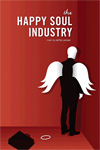You’ve got to hand it to Southwest Airlines and their advertising agency, GSD&M. They keep hammering home clear and obvious solutions to the massive pain in the ass that is airline travel. First, it was the game-changing “Bags fly Free” campaign, promising their passengers zero up charge for checked baggage.
Now they’ve gone after all the red tape and restrictions other airlines dump on us with impunity. “I just want to use mileage to take my family on vacation,” cries the frustrated father. I’ve been there, dude. It’s almost impossible to go where I want to go, when I want to go, using my miles. I invariably end up doubling the amount of miles I have to use in order to get the flights I requested. Sure, it’s bullshit. But I do it anyway. What choice do I have?
Um… Southwest Airlines.
With regard to execution and writing, I know these commercials aren’t anything special. Brightly lit, simply produced and even silly, they are meant to humorously drive home the point that at Southwest Airlines you will not be charged any hidden fees, that your bags fly free and so on.
And they do. They always do. For over ten years the agency and the client have been on point. Frankly, I’d argue that with selling points so potent GSD&M could have picked any campaign in their war room and gotten by just fine.
Which brings me to my second observation. Those killer selling points. I’m curious if the agency had anything to do with them. If so, they are really doing their job. For those aren’t just pieces of copy they are creative ideas for Southwest’s business. When agencies bring those to the table they are transcending any notions of obsolescence. The same can be said for Southwest airlines and its own beleaguered industry.




 The Happy Soul Industry
The Happy Soul Industry The Last Generation
The Last Generation